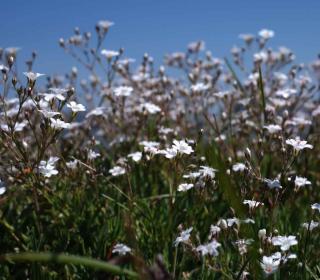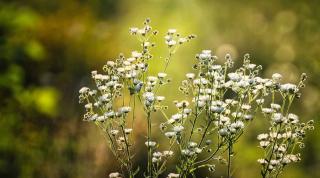

Gypsophila is a very cute perennial or annual that blooms in summer.
A summary of Gypsophila facts
Name – Gypsophila
Family – Caryophyllaceae
Type – perennial
Height – 8 to 40 inches (20 to 100 cm)
Exposure – full sun
Soil – ordinary, chalky, well drained
Flowering – May to September.
Caring for it from planting to pruning is easy and its ornamental impact is guaranteed.
 When purchased in nursery pots, better plant your gypsophila in fall, but all the way to the next summer is possible as long as it doesn’t freeze.
When purchased in nursery pots, better plant your gypsophila in fall, but all the way to the next summer is possible as long as it doesn’t freeze.
If planted in spring or summer, gypsophila must be watered more regularly during the 1st year than if it had been planted in fall.
Sowing gypsophila
Spring and summer is the usual season for sowing, ideally in a broad pan, with a transfer to small nursery pots shortly after sprouting, so that the seedling may grow until it can be transferred into place.
 It is always possible to remove wilted flowers regularly (deadheading) in order to increase blooming, but there are so many that this work quickly becomes tedious.
It is always possible to remove wilted flowers regularly (deadheading) in order to increase blooming, but there are so many that this work quickly becomes tedious.
More reasonable is to simply balance out the shape in fall, so that the bearing stays dense and tight.
 This grassy perennial also makes for ground cover or shrubby plants, and you’ll be thrilled with its very cute tiny white flowers.
This grassy perennial also makes for ground cover or shrubby plants, and you’ll be thrilled with its very cute tiny white flowers.
Among the many different species, you’ll find beautiful ones like sprawling gypsophila. Another produces a typical tiny cloud of white flowers: Gypsophila paniculata, the baby’s breath.
The name of the plant comes from ancient Greek, gypsos and philos which means the friend of chalk. No need to add that this plant loves chalky or limestone soil…
Gypsophila is plant that is beloved by florists, who like to use it when they are composing bouquets.
Take care to provide for enough space upon planting, because this plant can spread quickly and gobble up space.